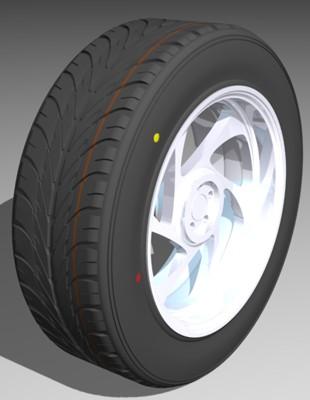Tyre Constructions
There are two different types of tyres manufactured today: the radial ply and the diagonal ply. These tyres are named and identified by the way they are constructed, as indicated by the illustration.


There are two different types of tyres manufactured today: the radial ply and the diagonal ply. These tyres are named and identified by the way they are constructed, as indicated by the illustration.


There are 3 common patterns available in the market, which are as follows
From the inside to the outside, the tread pattern of symmetrical tyres is the same. They are simpler to fit and maintain because of their homogeneous design, which permits flexible tyre rotation. For daily driving on city roads and highways, they offer a peaceful, pleasant ride. Often found in ordinary passenger automobiles, symmetrical tyres provide dependable performance, particularly in dry and slightly damp conditions, at a reasonable cost.


The tread pattern of asymmetrical tyres varies over their surface. While the inner portion uses smaller blocks and more grooves to promote water dispersion and minimize heat, the larger outside tread blocks offer improved grip and stability while cornering. Both dry and wet performance are provided by this combination. Asymmetrical tyres are perfect for fast-moving, performance-oriented cars since they are frequently unidirectional, or made to rotate exclusively in one direction.
Unidirectional tyres are designed to rotate in only one direction, helping to improve straight-line acceleration and reduce rolling resistance. They also provide better grip and shorter braking distances. These tyres must be mounted on a specific side of the vehicle, as indicated by an arrow on the sidewall showing the correct rotation direction. Incorrect installation can impact performance and safety.


There might be colorful spots on the sidewall of new tyres mainly for tyre fitters. To help balance the tyre when mounted, the yellow dot marks the tyre's lightest point. It aligns with the heaviest part of the wheel, the valve stem. Since each tyre is identical, these markings help improve balance and reduce vibrations. Although these dots are invisible to drivers, proper alignment ensures better tyre performance and a smoother ride.
Generally speaking, if you get a tyre with both a red and yellow dot on it, it should be mounted according to the red dot – i.e. the uniformity mark should line up with the dimple on the wheel rim, and the yellow mark should be ignored.